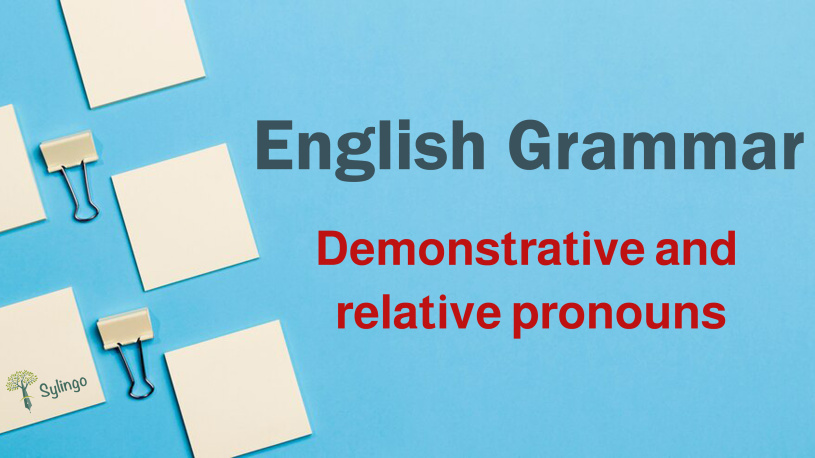We will finish the pronoun types with the demonstrative and relative pronouns, thus completing learning about all the pronouns in English grammar.
Demonstrative pronouns
There are four demonstrative pronouns in the language that can stand alone. We use these pronouns to refer to someone or something and replace nouns.
This
We use it with singular nouns at a near distance.
Example: This is my car.
That
We use it with singular nouns at a far distance
Example: That is my house.
These
We use it with plural nouns at a near distance.
Example: These are my books.
Those
We use it with plural nouns at a far distance.
Example: Those are my keys.
Demonstrative adjectives
They are the same previous pronouns with the same references, and we use them to modify a noun.
It is worth highlighting the difference between demonstrative pronouns and demonstrative adjectives. The difference lies in the following parts of speech that come after them, as the main verb in a sentence follows a demonstrative pronoun, whereas a noun follows a demonstrative adjective.
Examples:
|
This car is mine. |
|---|
|
That car is mine. |
|
These clothes are mine. |
|
Those clothes are mine. |
Relative pronouns
Each pronoun of relative pronouns refers to a person or thing mentioned in the sentence previously. A relative pronoun connects a clause with a complex sentence.
Who
We use it to refer to the subject of a sentence, and it must be a person.
Example: My father, who is a doctor, works at a hospital.
Whom
We use it to refer to the object of a sentence, and it must be a person.
Example: I know your sister whom I met earlier.
Which
We use it to refer to unhuman things like items or animals.
Example: I visited the restaurant which you recommended to me.
Whose
We use it to express ownership.
Example: The academy, whose learning is for youths, is now closed.
That
We can use it with things, items, or humans.
Example: This kind of flower that I like.
Where
We use it to refer to a place.
Example: I live in Damascus city where I was born.
When
We use it to refer to a time.
Example: March was the month when I was born.
Uses of relative pronouns
1- Relative pronouns are used to give further information in a sentence.
2- These pronouns are also used to connect sentences.
Example: This is my son. He studies law. → This is my son who studies law.
In both examples, we are talking about the same person, so we can link the sentences using a relative pronoun.
Notes:
1- After 'who' we put a verb, and after 'whom' we use a subject pronoun or a noun.
2- In some cases, we can use 'who' instead of 'whom'.
At the end of this lesson, we completed all kinds of pronouns in the English language. If you have any questions or suggestions, you can share them in the comments section below.
Exercise
Choose the correct answer.
1- Which demonstrative pronoun is for singular nouns?
(that, these, there, theirs)
2- Which demonstrative pronoun is for far nouns?
(this, it, those, them)
3- Which relative pronoun refers to possessive?
(those, whose, where, when)
4- Which relative pronoun refers to time?
(which, what, when, where)
5- Which relative pronoun refers to things and people?
(which, where, that, when)
Answers
1- that
2- those
3- whose
4- when
5- that





